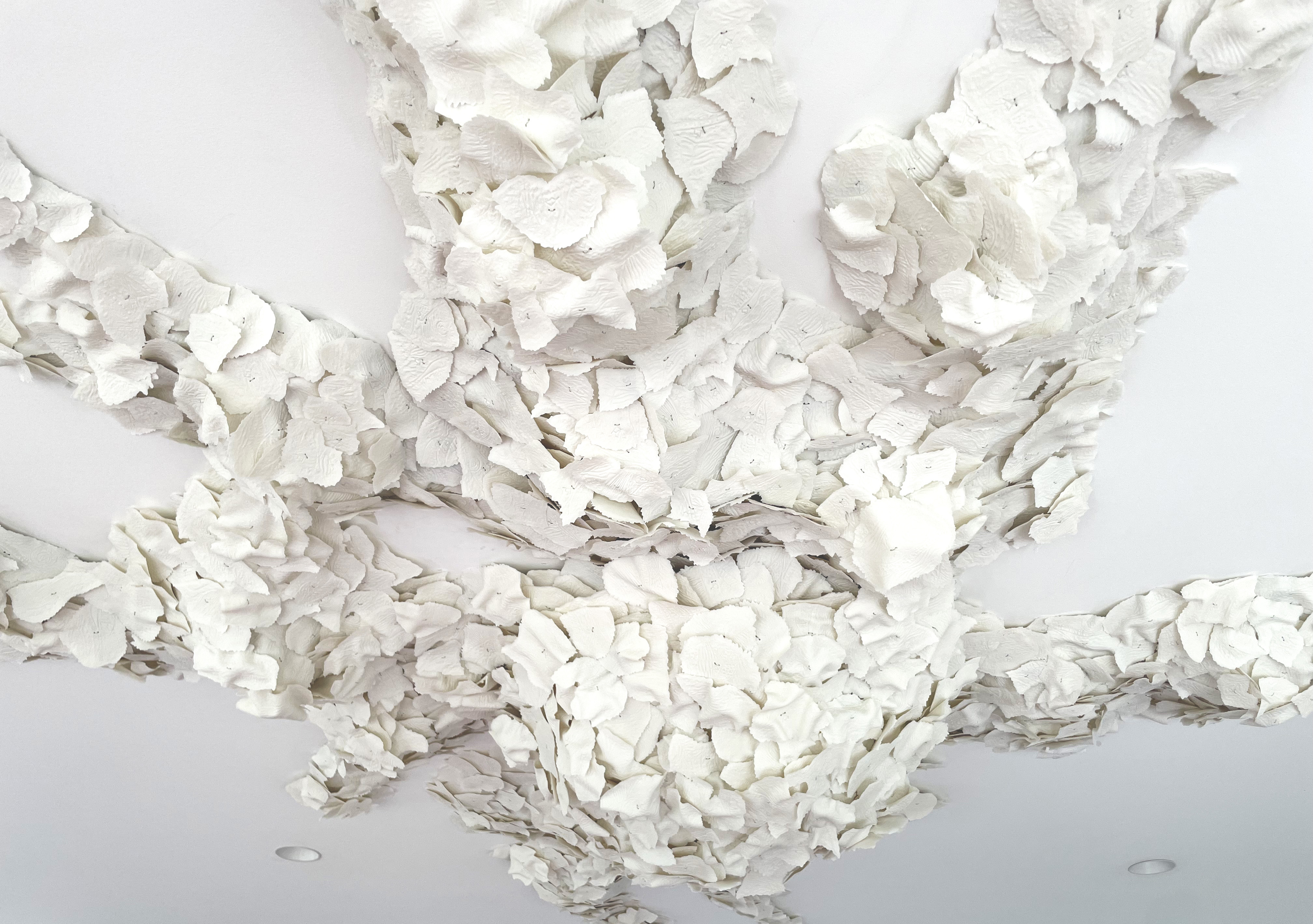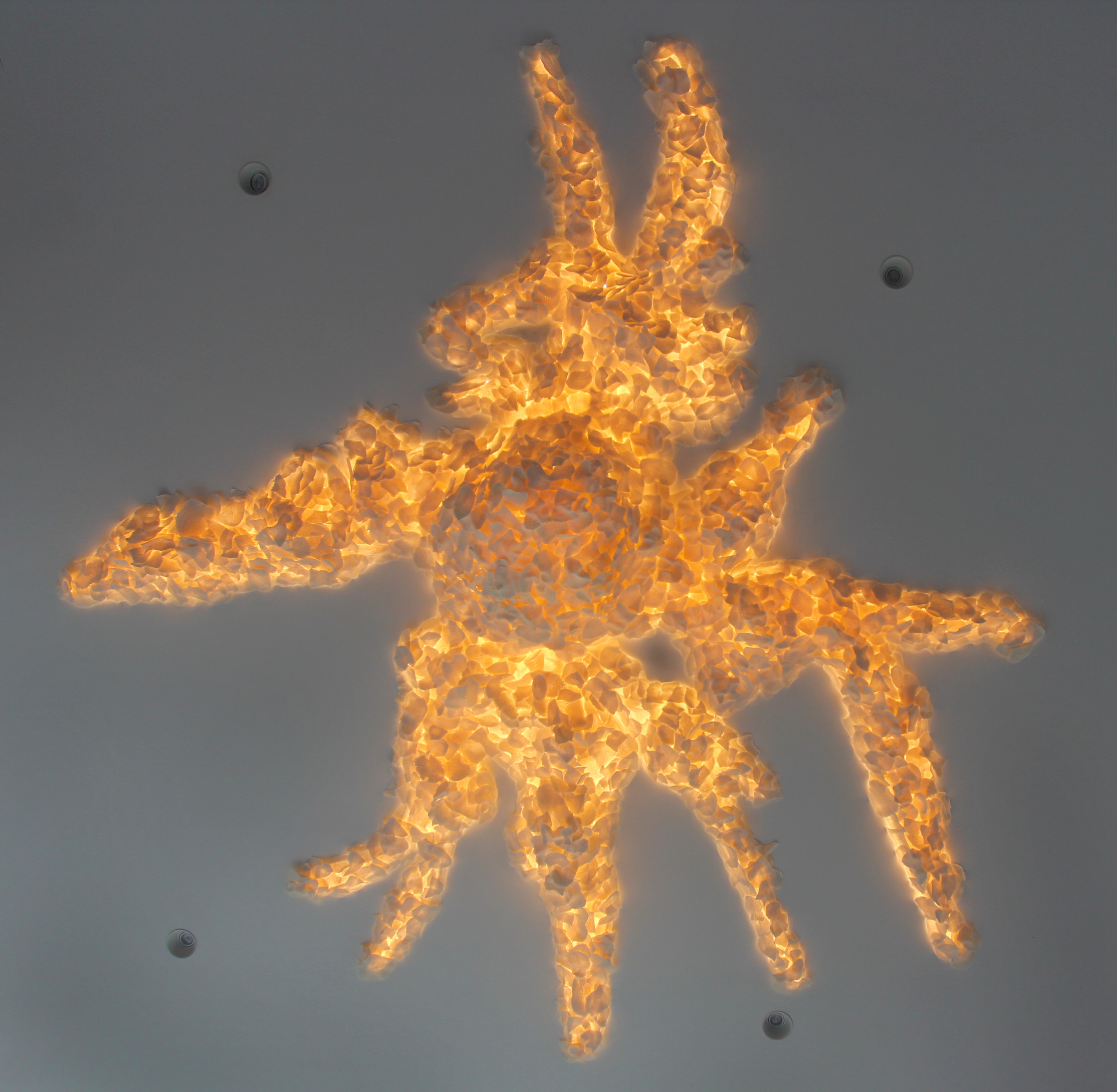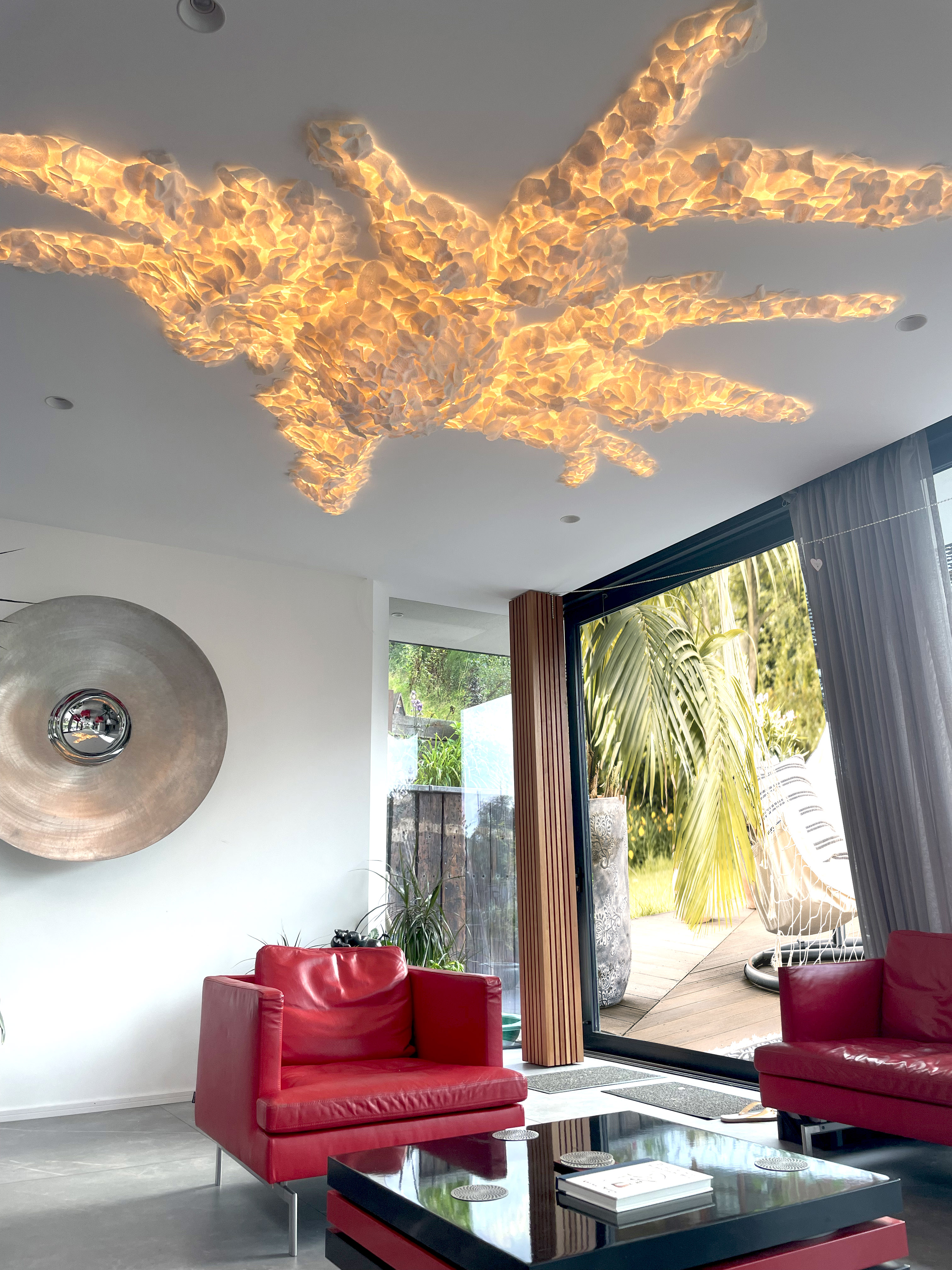| Company Details | |
|---|---|
| Company Name | Andra Munro Design Ltd |
| Address | Belfäläs Pioneer Way Stafford United Kingdom Map It |
| Name | Andra Munro |
| Job Title | Creative Director |
| Email hidden; Javascript is required. | |
| Phone | 07792906728 |
| Role of this organisation in the project being entered | Designer |
| Category |
|
| Project Name (written how it should appear) | Lux Progressio |
| Project Address | Beechcliff Lane Beech Staffordshire United Kingdom Map It |
| Client Name | Karen & Chris Spragg |
| Designer/Architect Name | Andra Munro |
| Contractor Name | In House In House |
| Project Description | "Lux Progressio" (Latin for Light Evolution) had a project price of £45’000 installed and was completed end of August 2021. The client requested a low relief porcelain surface with lighting to organically appear as if growing upon and from the ceiling. The piece was to be sited within the main open plan living area of the house which forms a focal point while offering an ambient light source within the room. The piece should reflect their lifestyle choices bringing nature not only closer but within their home. Their newly constructed home is of some substantial size built in poured concrete with glass frontage spanning huge open spaces. The interior is very minimalist and modern. They draw inspiration from their local surroundings. The house is set within typical English woodlands with their own large landscaped private pond. The clients maintain a good relationship with nature inviting it to be a part of their life, both inside and out. There are many walks around the local area to which they walk most mornings. Through what you could find during these walks became their inspiration as to what they desired the piece to be formed from. |
| Materials Used | The primary material used is porcelain. This makes up the body and forms the outer skin of the installation, giving it a unique texture while allowing light to pass through, further enhancing the texture created within each of the 3500 individual pieces. This gives two surfaces to the ceiling. The pattern within its imprinted texture and then again the shape, position and composition of each piece to one another. A plaster mould is first made, with its unique textured surface, surface used to emboss each piece of porcelain before it’s cut, edged, stamped & holed for its attachment point. The porcelain is so thin that once fired it takes on a translucency that also high in strength. Structurally, a steel frame and aluminium expanded mesh were used to create the main form onto which the porcelain pieces are attached, while stainless steel wire & fixings are used to attach each piece. |
| Sustainability | By its nature, porcelain is an environmentally friendly clay readily available in most areas, meaning that renewability is not an issue and CO2 emissions are lower as a result of lower transport costs. Low maintenance means low energy and chemical consumption. Porcelain will last a lifetime, is easy to clean & is almost totally inert and does not produce any fumes or toxins even in the event of fire. The porcelain pieces have been irregularly cut hence no waste in creation of the forms. The off cuts of mesh or led light sheets are used in small products ie- samples. The aluminium expanded mesh is produced in factory with practically no waste. First creating multiple slits in the sheet, and then stretching the sheet. The stretching creates a unique diamond pattern opening. This process creates no waste (thus keeping down production costs) and it also adds structural strength to the product. The steel structure is handcrafted by local blacksmith in Staffordshire, aiding not only local craftsmen but a trade that is steadily declining. There is also an emotional connection, that emotional relation between the client and the lighting, that has been established from the very beginning. The client’s story is told through textured porcelain and giving life by light, uplifting the mood the energy for the space also. A connection between the client and their ceiling lighting is developed that will stand the test of time not only through the natural materials and the lifetime warranty of the product (with the exception of the LED’s) but through this unique emotional relation. |
| Issues Faced | The porcelain surfaces created are like living entities. Every interior has a different impact upon each piece we create, some want a dramatic impact while others want a more subtle feel, a symbiotic relationship with their surroundings. Having a 3D low relief surface proved tricky to achieve as we didn’t want fixings to be visible, yet they had to be strong enough to support the weight of the installation. The whole piece had to be a close fit to the ceiling as to come from within the ceiling & not be sat upon it. As each part of the pieces structure was created the shape slightly changes as nothing was made to jig or mould. Thus from the local blacksmith bending the frame to hand drawn stencil, to the wrapping of the mesh around the structure from which you wire each piece of porcelain. Sinuous forms are created along the way by thousands of intricate small porcelain pieces like the craziest puzzle to form a striking cohesive 3D ceiling surface. |
| Video Link | youtu.be |
| Supporting Images |





